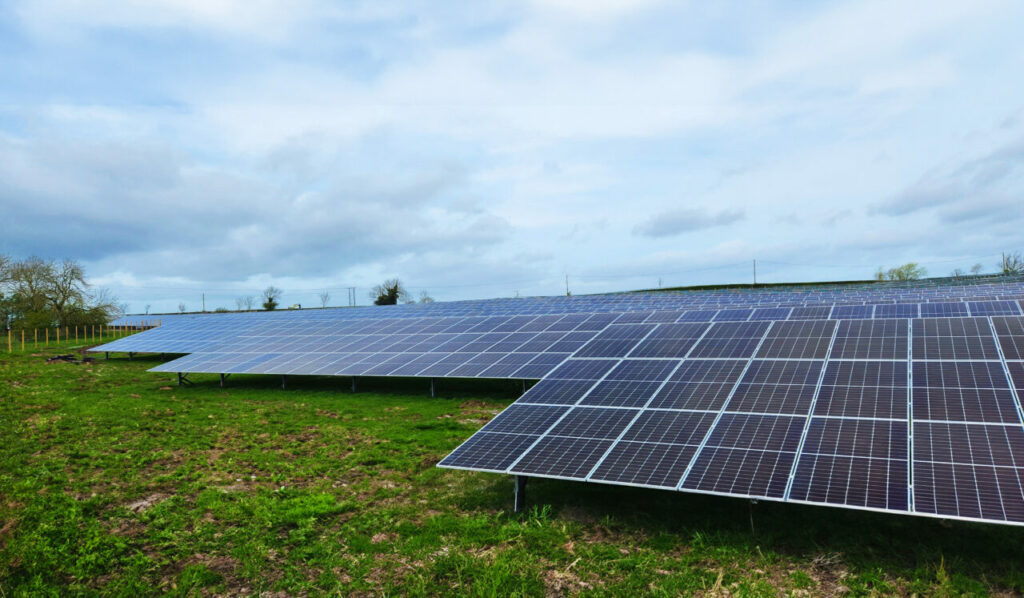
Q ENERGY has announced it is advancing construction on its 33 MWp Whinfield Solar PV farm near Darlington in the Northeast. Scheduled for completion immininently, Whinfield Solar will feature approximately 60,000 ground-mounted solar modules. Q Energy anticipates these will generate enough electricity to power over 8,700 average households annually while offsetting around 8,000 tonnes of carbon emissions.
Expanding UK footprint
This marks Q ENERGY’s latest foray into the UK’s renewable energy landscape. During the 1.3 ROC (Renewable Obligation Certificates) period, the company (then operating under the Hanwha Qcells brand) completed five solar PV installations across the country. The Q ENERGY entity was formed in 2022 after its development and EPC business segment was split off from Hanwha Qcells and was then combined with a French developer and EPC provider to form today’s Q ENERGY.
“We are delighted to announce the construction of our first solar PV farm in the UK under the Q ENERGY brand,” said Mark Jones, senior business developer at Q ENERGY. “With this project, Q ENERGY is not only making a contribution to the energy transition in the UK but will also create added value for the environment.”
‘Havens for biodiversity’
Q ENERGY was keen to emphasize the environmental impact of Whinfield Solar. The company anticipates a biodiversity net gain of 55.15% for habitat units and 9.72% for hedgerow units. Additionally, during the construction phase, Q ENERGY says it will prioritise engagement with local suppliers to promote regional economic opportunities and minimize its carbon footprint.
Biodiversity has become something of a hot topic of late, with a survey supported by Solar Energy UK determining that solar farms can be ‘havens for biodiversity.
The ‘Solar Habitat 2024: Ecological trends on solar farms in the UK’ study, conducted in collaboration with ecological consultancies Clarkson & Woods and Wychwood Biodiversity, analysed a total of 87 solar sites in 2023. It concluded that vulnerable and red-listed species are unusually common on UK solar farms. Alongside the benefits for wildlife, it was discovered that planting plugs and pot-grown plants under solar modules have an 80% improved survival rate after two years.
“Our understanding of biodiversity at solar farms is growing as more ecological monitoring data are collected across an increasing number of UK solar farms. Groups such as birds and invertebrates appear to respond positively to biodiversity-focused management at solar farms, and we hope to continue working with the data to further unpick the patterns identified,” said report analyst Hollie Blaydes, PhD researcher at Lancaster Environment Centre, Lancaster University.
These research findings have an increasingly important role to play in the public consultation process on solar farm location as community engagement becomes ever more crucial in solar PV planning.
Solar Power Portal’s publisher Solar Media will host the UK Solar Summit on 4-5 June 2024 in London. The event will explore UK’s new landscape for utility and rooftop solar, looking at the opportunities within a GW+ annual market, and much more. For more information, go to the website.

